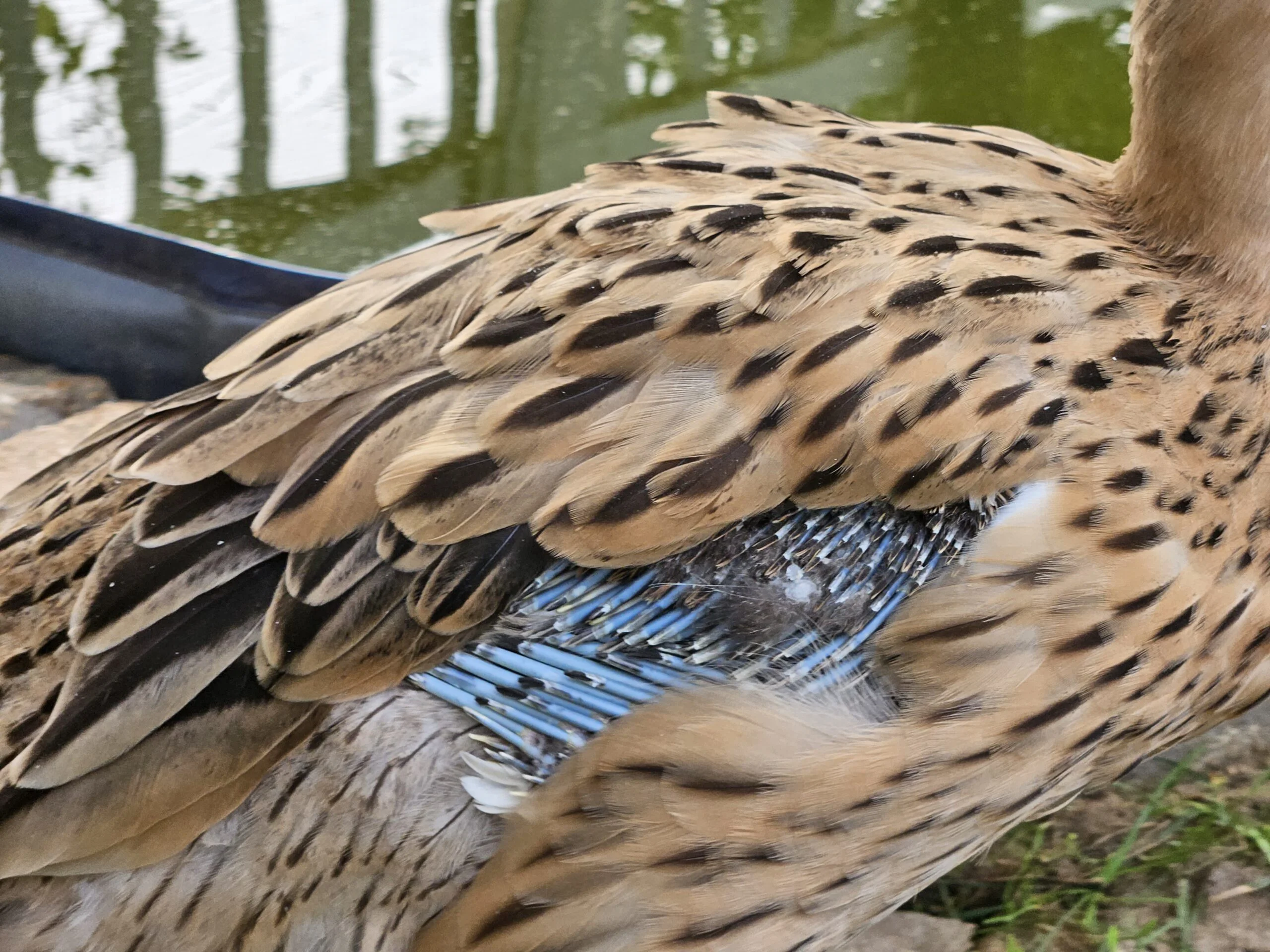
Navigating Pet Duck Molting: A Owner’s Handbook
Last updated on June 21st, 2025 at 03:21 pm
Have you ever approached your duck enclosure only to find it covered with feathers, almost like a pillow exploded, causing a momentary panic as you worried about the possibility of a predator assault? Fortunately, it turns out that it’s simply your ducks undergoing a shedding process to refresh their feathers.
Feathers are not just a beautiful coat for our beloved ducks; they serve crucial functions, including insulation, waterproofing, and flight. As responsible duck owners, understanding the process of molting is essential to ensure our feathered friends remain healthy and comfortable. This guide will explore the basics of duck molting, its science, the overall process, and effective ways to support our ducks during this natural occurrence.
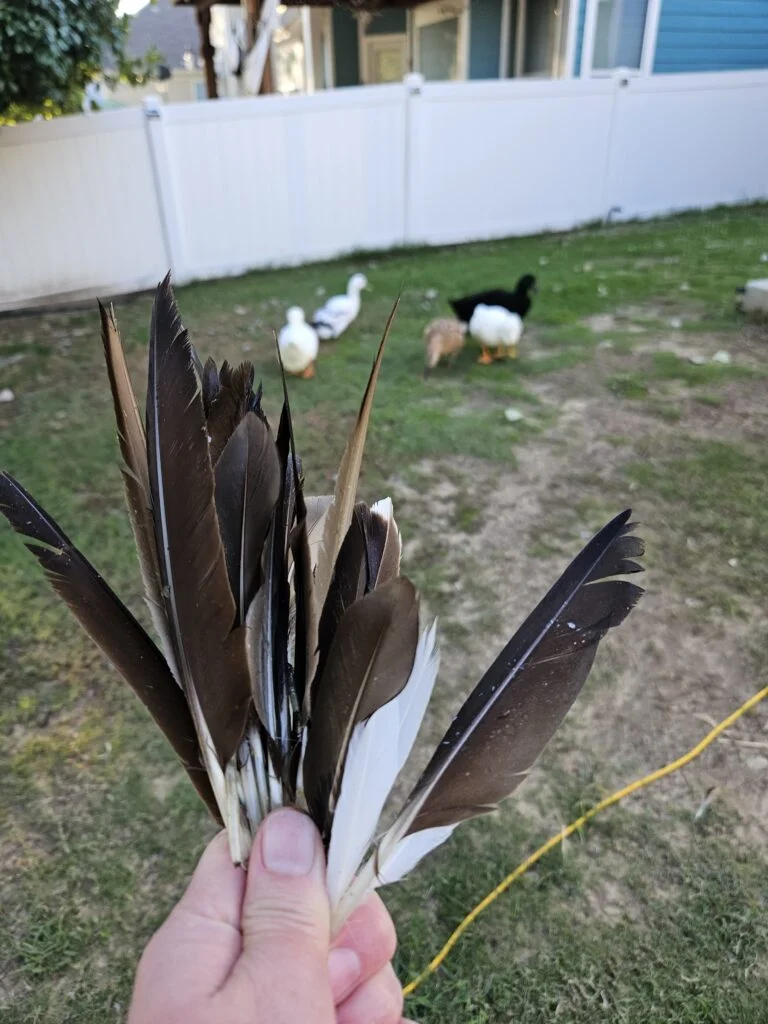
Ducks of Providence is free, thanks to reader support! Ads and affiliate links help us cover costs—if you shop through our links, we may earn a small commission at no extra cost to you. Thanks for helping keep our content free and our ducks happy! 🦆 Learn more
What is Duck Molting?
Molting, a regular and necessary part of a duck’s life cycle, refers to the shedding and regrowth of feathers. It is an intricate process that allows ducks to replace damaged or worn-out feathers, maintaining their vital functions and ensuring optimal health. Ducks undergo molting annually, usually after the breeding season, and it can last for several weeks.
Understanding the Science Behind Molting
In ducks, molting is like a carefully planned dance, with hormones, the environment, and the nutrients they get from their food all playing essential roles. As the seasons change, hormones are released in response to the amount of daylight and temperature, kickstarting the molting process. This involves shedding old feathers (called ecdysis) and growing new ones (a complex process called feather morphogenesis).
Feathers are mostly made of a protein called keratin, and for them to grow well, ducks need the proper nutrients like protein, vitamins, and minerals. During molting, ducks eat a lot to get the energy they need for feather regeneration. A diet rich in nutrients not only helps in growing strong feathers but also keeps the ducks healthy overall during this demanding time.
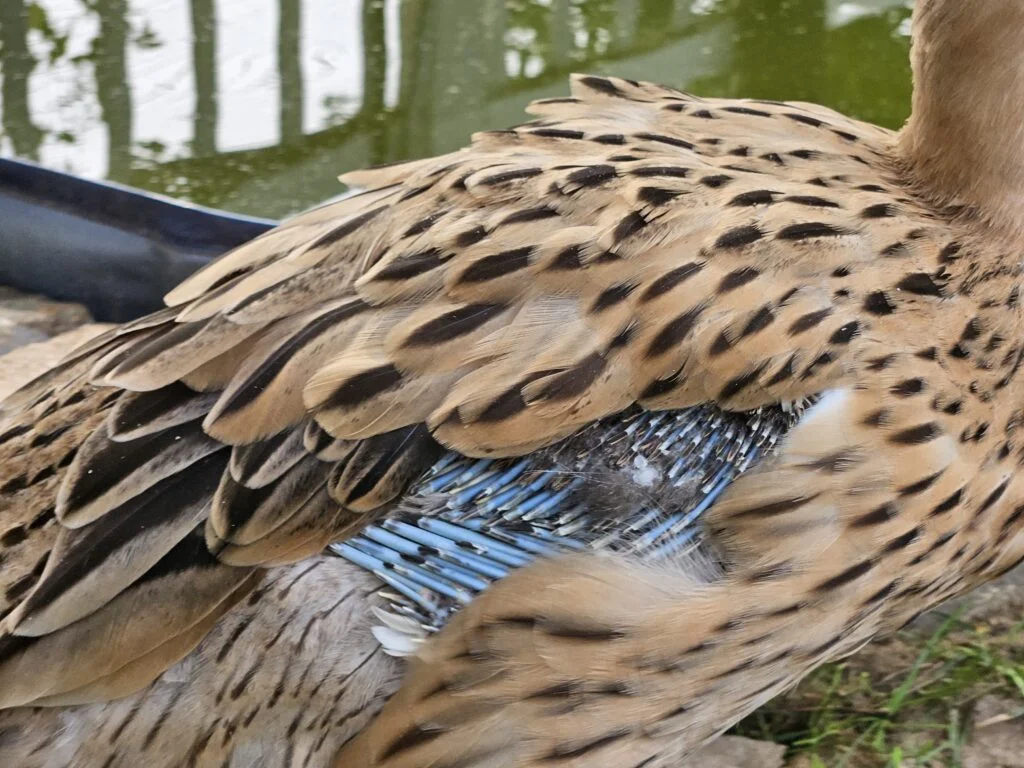
Molting takes a lot of energy, and ducks must carefully manage their resources. This means they might temporarily use less energy for things like reproducing and growing so they can focus on renewing their feathers. Knowing this, it’s important for caretakers to provide the right environment and a balanced diet to ensure ducks stay healthy and complete the molting process successfully.
Understanding the science behind molting gives duck owners the knowledge to care for their feathered friends effectively. By knowing how hormones, nutrients, and energy play into molting, caretakers can make smart choices about what their ducks eat, their living conditions, and overall care. This deeper understanding helps in giving ducks the best support and resources for a smooth and successful molting experience.
Types of Duck Molts
Let’s dive into the world of duck molting and understand how ducks change their feathers. There are two main ways ducks go through this process: partial molt and full molt. In a partial molt, ducks only replace some of their feathers, like the down feathers, while in a full molt, they shed and replace almost all of their feathers, including the flight feathers. Each type of molt serves a purpose in keeping ducks’ feathers healthy and functional. Also important to note is that ducks exhibit distinct molting patterns based on gender. Now, let’s explore these molting types in more detail!
Juvenile Molt
When transitioning from ducklings to juveniles, both males and females undergo multiple molting phases as they develop their adult plumage. Initially, you’ll notice the fading of duckling feather hues, gradually replaced by adult colors. The process of acquiring the final adult feather colors can take several molting cycles to complete.
The first molt happens around 6-7 weeks of age when ducklings develop their initial plumage. Typically, both male and female ducklings display similar appearances during this stage.

During the juvenile molt stage in ducks, a notable transition occurs as their feathers undergo a replacement process. This phase signals a significant change in their plumage, often resulting in a transitional appearance. They are losing their baby fluff and start growing their adult feathers. Ducks during this time may exhibit a blend of old and new feathers, creating a somewhat uneven or patchy look. The stage is often referred to as the ugly duckling stage.
Analogous to adolescents outgrowing clothing, ducks manage this phase with optimal nutrition and regular water activities, facilitating the growth of their new plumage.

Several weeks after the initial molt, they will drop those first “juvenile” feathers and grow in feathers colored differently, depending on their sex. This is when the drake colors and the typical drake curl appear.
Partial Molt
- During a partial molt, birds shed and replace only a portion of their feathers, typically the down feathers or contour feathers.
- This type of molt allows birds to maintain some level of insulation, protection, and flight capability while still undergoing a renewal of feathers.
- Ducks may experience a partial molt as a part of their regular feather maintenance, shedding and replacing specific feathers without a complete loss of plumage.
- Happens usually in Spring before the breeding season.
Full Molt (Including Flight Feathers)
- A full molt involves the shedding and replacement of most, if not all, of a bird’s feathers, including down feathers and flight feathers.
- This more extensive molt results in a temporary loss of flight capability, as the crucial flight feathers are also replaced.
- Ducks often undergo a full molt once a year, typically after the breeding season. This allows them to renew their plumage entirely, ensuring the feathers remain in optimal condition for insulation, buoyancy, and flight.
These two types of molting represent different strategies in feather renewal, with partial molts allowing for continuous feather upkeep and full molts providing a comprehensive feather regeneration process, albeit temporarily impacting the bird’s ability to fly.
Molting in Female Ducks (Hens)
Females engage in two primary molting cycles annually. During the spring molt, females retain adequate feathers to maintain warmth for egg clutches. The molted feathers are often incorporated into their nests, aiding in insulation to ensure the comfort of hatchlings.
Subsequently, in summer, females molt their down feathers, regenerating them post-breeding to coincide with the offspring’s growth, often relocating nests to safer areas. This period also aligns with the re-growth of flight feathers for both mother ducks and ducklings, requiring heightened vigilance due to increased vulnerability.
Molting in Male Ducks (Drakes)
Conversely, male ducks undergo several molting episodes yearly. The first, termed the “nuptial” molt, occurs before mating season, where drakes shed and grow brighter, more attention-grabbing plumage to attract potential mates. During this phase, mallard drakes, the male ducks, showcase a striking transformation, developing vibrant breeding plumage characterized by iridescent green heads, crisp white collars, and rich chestnut-brown chests.
This stunning makeover is pivotal in their dynamic social structures’ intricate courtship rituals and mate selection processes. The nuptial molt signifies a visual spectacle and an essential aspect of their reproductive success, enhancing their attractiveness to potential mates and ensuring the perpetuation of their species.
Following the breeding phase, drakes undergo an “eclipse” molt, shedding their vibrant feathers for a more subdued, camouflage-like appearance. This adaptation aids in protection from predators during the summer and fall seasons. The eclipse molt encompasses a comprehensive renewal, including the molting of down feathers. As they shed their worn plumage and grow new feathers, they undergo a temporary period of flightlessness.
While essential for feather renewal, this vulnerable phase exposes them to increased risks from predators and environmental stressors. The eclipse molt’s timing often coincides with the end of the breeding season, allowing the ducks to prioritize their physical rejuvenation before the challenging migratory journeys that lay ahead.

While both genders may appear disheveled during the summer molt, characterized by the shedding of numerous feathers, it’s a natural process facilitating their quick recovery and rejuvenation. Although the sight of many feathers may cause concern, it’s an inherent and beneficial occurrence in their lifecycle.
In the wild, these molting processes are intertwined with the rhythms of nature, shaping the behavior and dynamics of mallard duck communities. Observing these molting phases in their natural habitats offers a glimpse into the resilience and adaptability of these remarkable creatures, highlighting the delicate balance between survival, reproduction, and the demands of the ever-changing environment.
Understanding natural molting cycles provides insights into the needs of our domestic ducks during their molt.
Ducks and Molting: Wild or Pet, What’s the Difference?
For duck owners looking to take the best care of their ducks during molting, it’s crucial to understand how wild and pet ducks differ in this process.
Even though both types of ducks molt and change their feathers, the differences in where they live and how they live lead to noticeable variations in how they act and molt.
Recognizing how the environment and lifestyle changes affect their molting helps you as caregivers to customize your care to fit your ducks’ unique needs. By embracing these differences, you can create supportive and enriching surroundings that meet your pet ducks’ specific requirements. This ensures a smooth and comfy molting experience, promoting your feathered friends’ overall health and well-being.
Wild Ducks
As the most widespread and recognizable duck species globally, Mallard ducks exhibit fascinating molting behaviors in the wild that contribute to their remarkable adaptability to various environments.
Wild ducks, closely connected to the rhythms of their natural homes, go through molting as a crucial part of their survival. The changing seasons, shifts in temperature, and the presence of natural resources all play a significant role in starting their molting cycles. In the wild, the eclipse and the nuptial molt are super important, causing changes that help the ducks do well in the harsh conditions of their natural surroundings. How they molt is closely tied to when they migrate, how they mate, and the tricky details of finding food and avoiding predators.
Domestic Ducks
In contrast, domestic ducks benefit from the protective shelter and consistent resources their human caretakers provide. The controlled environments of ponds or enclosures shield them from many environmental stressors their wild counterparts encounter. Consequently, domestic ducks often experience a more gradual and less intense molting process than wild ducks. The availability of a stable food supply and controlled living conditions can influence the timing and duration of their molting phases, potentially leading to variations in their molting patterns compared to those of wild ducks.
This means they may molt at times not typically seen in wild ducks. Our ducks, for example, have decided to undergo a full molt in November.
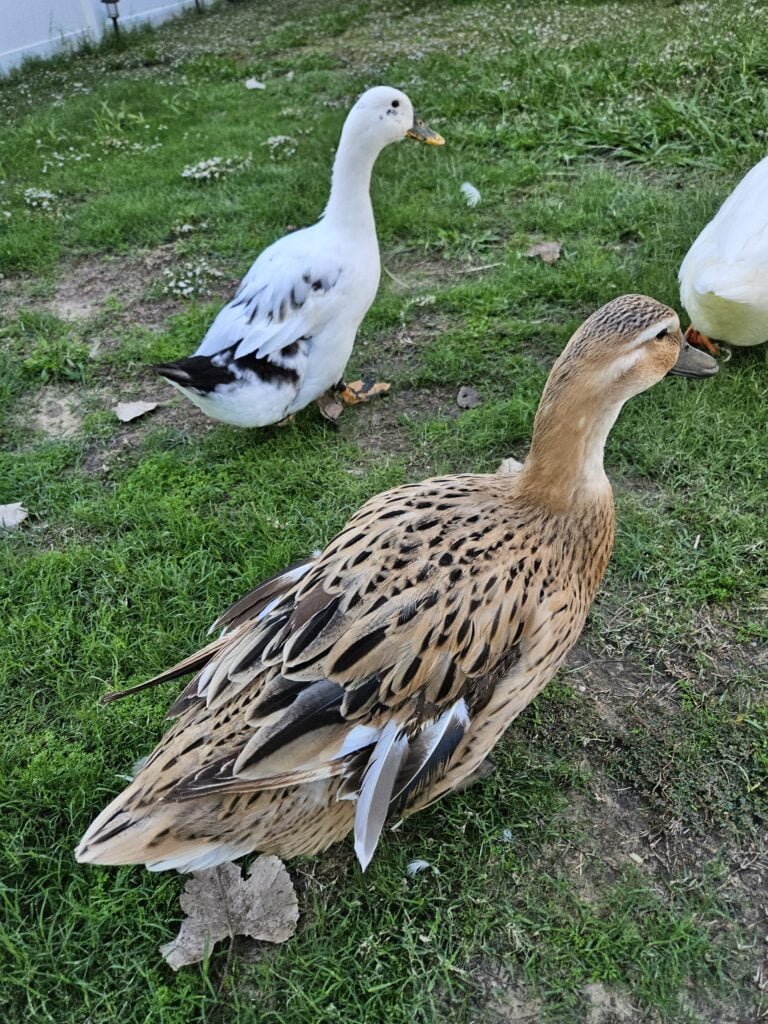
How Your Duck Behaves During Molting
Knowing how your pet duck acts during molting is crucial for providing the best care and support during this delicate time. Molting can be tough on ducks, and they might show increased sensitivity and various behavioral changes because of the physical and physiological demands of growing new feathers. Some ducks are incredibly grumpy. Others are especially quiet. Awareness of these changes helps create a caring environment that ensures their comfort and well-being.
During molting, your duck’s energy is mainly focused on growing feathers, so they need extra care and attention from you. They might seem more tired, less active, and more sensitive to what’s happening around them. To help them through this, ensuring they get a diet that meets their molting needs, with plenty of high-quality protein, vitamins, and minerals for strong and healthy feather growth, is important. You can also consider giving them nutrient-rich treats like mealworms, grubs, leafy greens, and specialized poultry feeds during this challenging period.
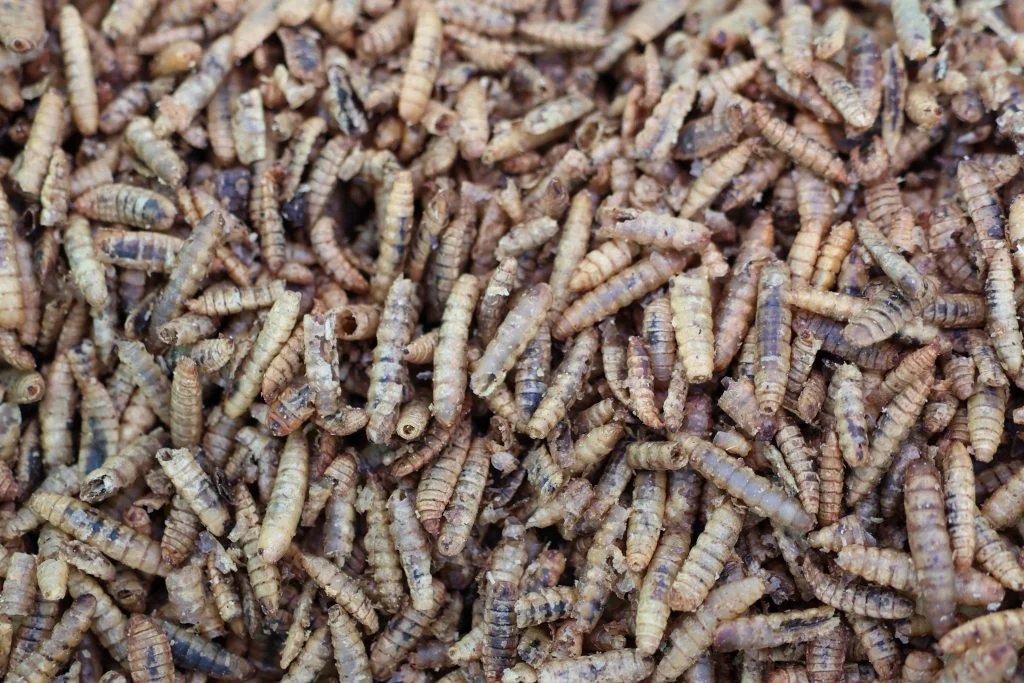
Additionally, it’s a good idea to minimize handling and disturbances during your duck’s molting phase. Ducks can become more sensitive and easily annoyed during this time, and too much handling can stress them out, affecting their natural molting process. Keeping interactions to a minimum and creating a calm, quiet environment can reduce their stress and contribute to a smoother and more comfortable molting experience.
The molting period can be pretty challenging for your ducks. A significant portion of their skin is exposed to the elements and mosquitoes, and the emerging new feathers are exceptionally delicate. A developing feather has blood flowing through it until it reaches full growth, making the new feathers sensitive and prone to breaking, which can lead to light bleeding. Adding extra bedding to their coop during a molt can help provide comfort and support.
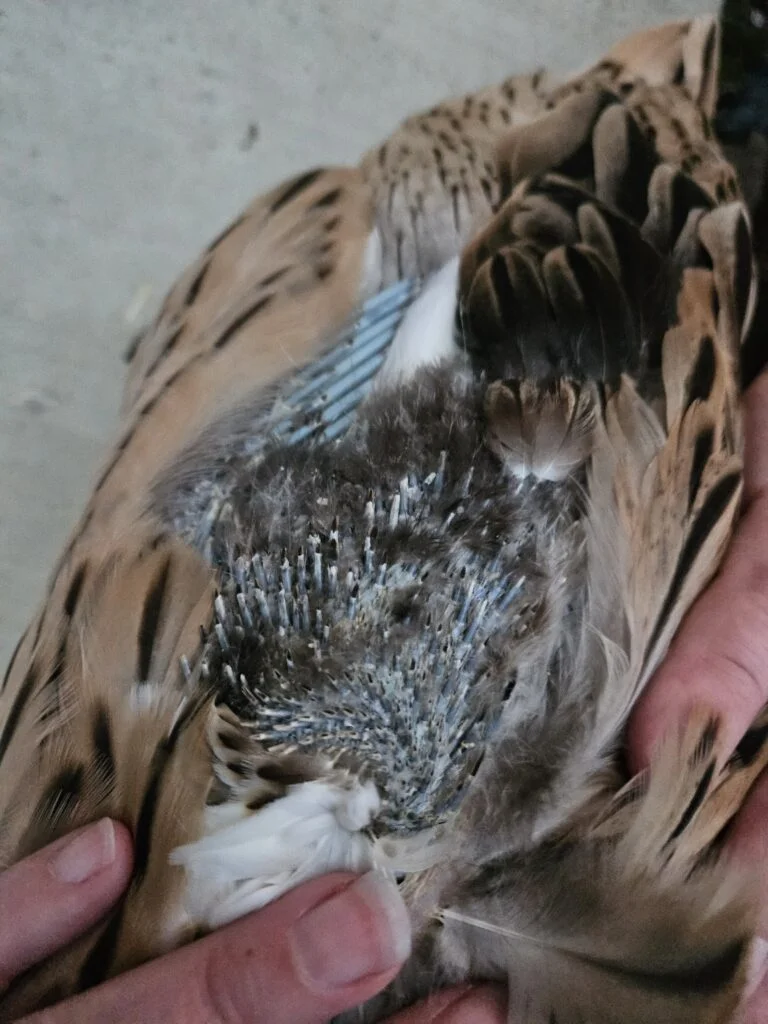
Providing a peaceful space, access to fresh water for bathing, and a well-balanced diet not only helps their physical well-being but also supports their emotional health. A stress-free environment that allows them to rest and recover at their own pace greatly contributes to a successful molting process. Additionally, keeping a close eye on any signs of discomfort, illness, or unusual behavior helps you address potential issues promptly and ensures your duck gets the care and attention they need during this sensitive phase.
Understanding and respecting your duck’s behavior during molting can create a caring and supportive environment that meets their unique needs. With your attentive care and proper diet, you can help your duck go through molting more comfortably, ensuring they emerge with fresh feathers and renewed vitality.
How to Help Your Duck During Molting
- Feed a Balanced Diet: Make sure your pet duck gets a good mix of nutrients, like protein, vitamins, and minerals, to keep them healthy and help their feathers grow back. You can include high-quality poultry feeds, leafy greens, and protein-rich treats like mealworms and grubs in their diet.
- Create a Relaxing Home: It’s important to provide a calm and safe environment for your pet duck while they’re molting. Keep things quiet, avoid loud noises, and remove any potential sources of stress to create a peaceful space that helps them feel comfortable and relaxed.
- Minimize Handling: Ducks are very sensitive while their new feathers are growing. Minimize handling as this can cause discomfort to your ducks.
- Keep Water Available: Ducks need water not just for drinking but also for taking care of their feathers. Ensure they have access to clean and shallow water so they can bathe and groom themselves, supporting feather upkeep and keeping their plumage healthy.
- Gentle Feather Care: Help your duck by gently maintaining their feathers. Use a soft brush or your hands to remove loose feathers and clean away any debris that might collect during molting. This can ease any discomfort and promote the healthy growth of their new feathers.
- Watch for Health Issues: Keep a close watch on your duck for any signs of sickness, infection, or parasites. Molting can make ducks more susceptible to health problems, so spotting issues early and getting the right help is crucial for their overall well-being.
- Be Patient and Understanding: Show patience and understanding during this sensitive time. Minimize disruptions, avoid handling them too much, and offer gentle reassurance to make them feel safe and cared for as they go through the molting process.
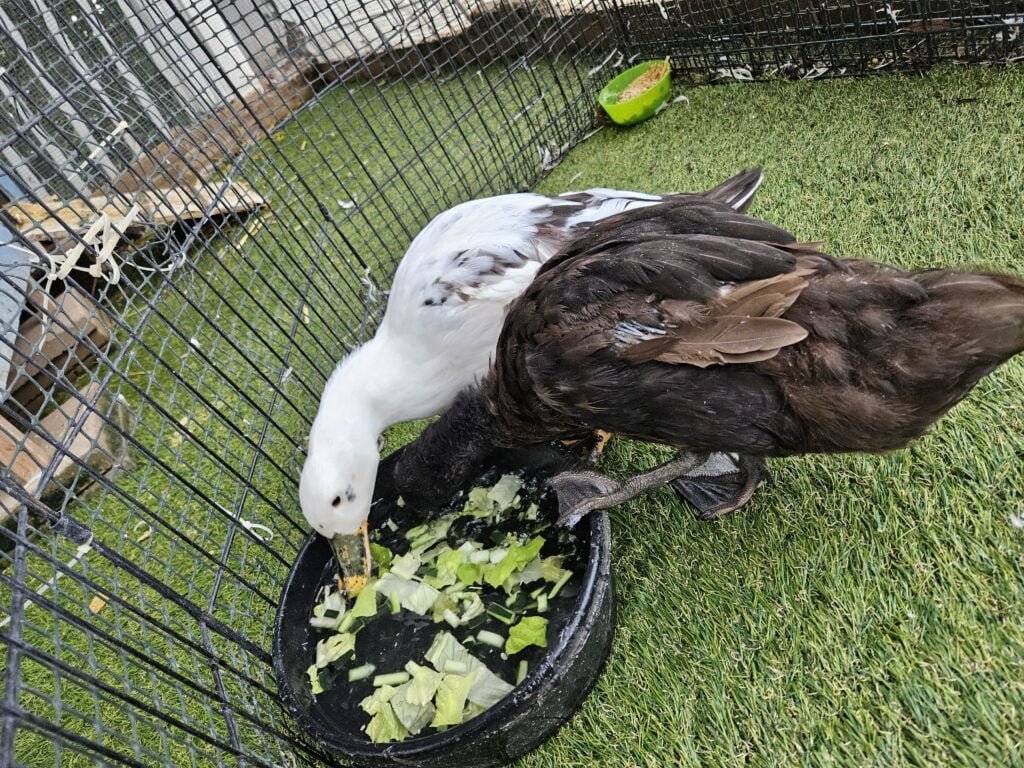
By providing your duck with the necessary care and support, you can help them navigate through the challenges of molting with comfort and ease. Your attentive approach, balanced diet, stress-free environment, and regular feather maintenance ensure that your pet duck emerges from the molting process with renewed plumage and a strengthened bond of trust and companionship with you.
Molting and Egg Production: What to Expect
Understanding the relationship between molting and egg production is crucial for duck owners, as molting can significantly impact a duck’s reproductive cycle. During molting, a duck’s energy and nutritional resources are primarily redirected toward feather regeneration, leading to a temporary pause or reduction in egg-laying activities. You must be aware of the following points to manage your expectations during this transitional phase.
- Temporary Reduction in Egg Production: As ducks prioritize the energy-intensive molting process, their egg-laying capabilities may decrease or temporarily cease altogether. This natural shift in focus from reproduction to feather regeneration is a temporary adjustment that allows them to allocate their resources toward maintaining their physical health and vitality.
- Egg-Laying Resumes After Molting: Once your duck completes the molting process and their new feathers have grown in, you can expect their egg-laying activities to resume gradually. Providing a conducive environment, a balanced diet, and a stress-free atmosphere during and after molting can support their transition back to their regular egg-laying routine.
- Nutritional Support for Recovery: Offering a nutritionally balanced diet rich in essential nutrients throughout the molting period is vital for supporting your duck’s overall health and aiding in post-molt recovery. Providing high-quality feeds, supplements, and nutrient-dense treats can help replenish the resources expended during molting, promoting a smoother transition back to regular egg production.
- Maintain a Watchful Eye: While your duck’s focus shifts during molting, it’s crucial to remain vigilant and monitor their overall health and well-being. Keeping an eye out for signs of distress, illness, or abnormal behavior ensures that you can promptly address any potential issues, fostering a seamless transition back to their regular egg-laying cycle.
Understanding the temporary impact of molting on your duck’s egg-laying activities and providing the necessary support and care during this period can help your feathered companion navigate this natural cycle with ease and comfort. Your attentive approach, a well-balanced diet, and a nurturing environment foster their overall well-being and set the stage for a successful transition back to their regular egg-laying routine.
Conclusion
As we finish exploring the world of duck molting, we’re reminded of how we need to balance nature’s amazing features with our responsibility to care for our pets. Learning about molting, like how wild mallard ducks do it differently and how domestic ducks need extra care during this changing time, has made us appreciate how tough and adaptable these feathered marvels are.
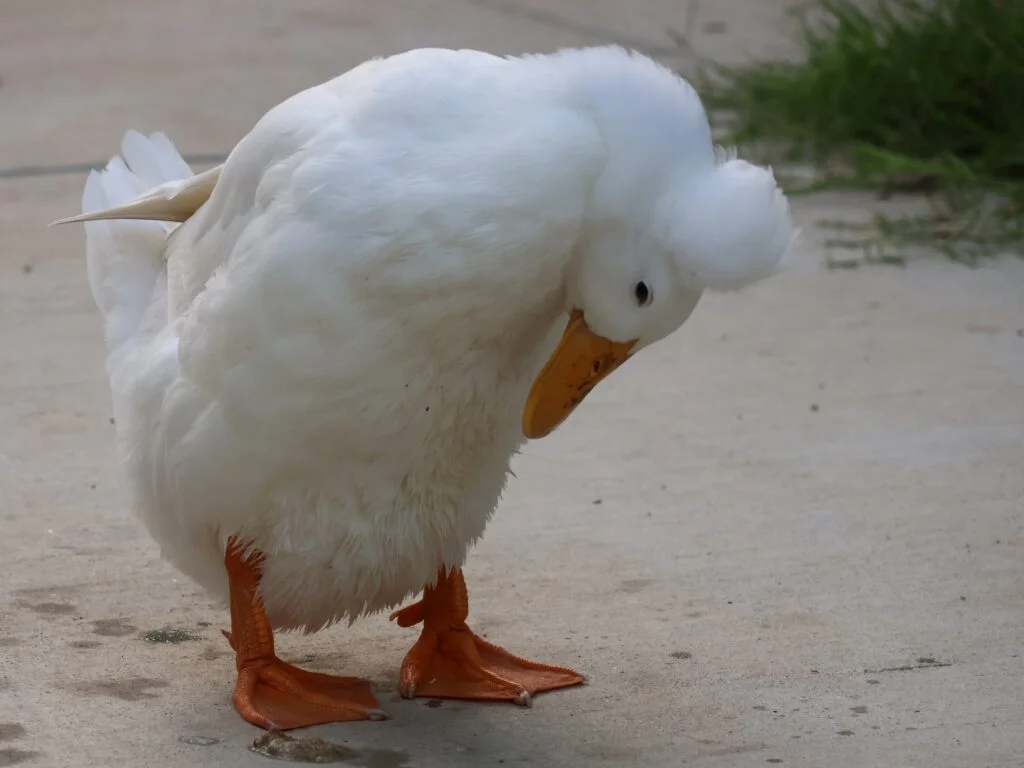
From noticing small changes in their behavior during molting to doing practical things like giving them the right food, making a calm space, and not bothering them too much, we’ve learned a lot about how to help our ducks through this sensitive time. By using these ideas in our everyday care routine, we make a place where our feathered pals can do well, grow, and get new feathers comfortably and gracefully.
Getting into the science of molting, we’ve discovered the complex mix of hormones, nutrients, and energy that makes this important process happen. With this info, we can give our ducks the best help and resources to grow new feathers smoothly, ensuring their physical and emotional well-being is our main focus in taking care of them.
In this journey, we’ve grown to really care about the strong connection between us and our special ducks. It’s more than just taking care of them; it’s about understanding and sharing good times together. As we keep supporting our ducks through molting and beyond, let’s remember that our commitment to their well-being shows how much we care about these amazing creatures. They bring joy to our lives with their funny quacks and lovable presence.
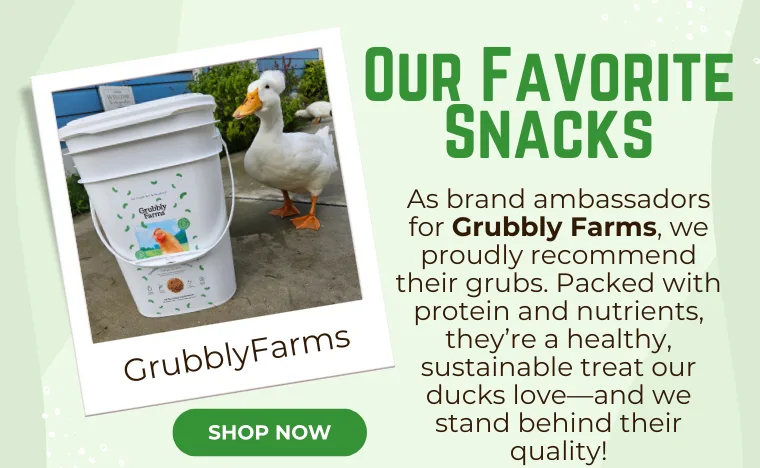
Related Posts:
- Essential Nutritional Needs of Ducks: A Complete Overview
- The Science Behind Duck Feathers: Anatomy, Function & Care
- Why Wet Feather in Ducks Happens and How to Fix It
- The Ultimate Guide to Healthy Duck Snacks: Treats Your Ducks Will Love
- Ducks and Water: Keeping Your Flock Happy and Healthy
- Male vs Female Ducks Explained: From Bills to Behaviors

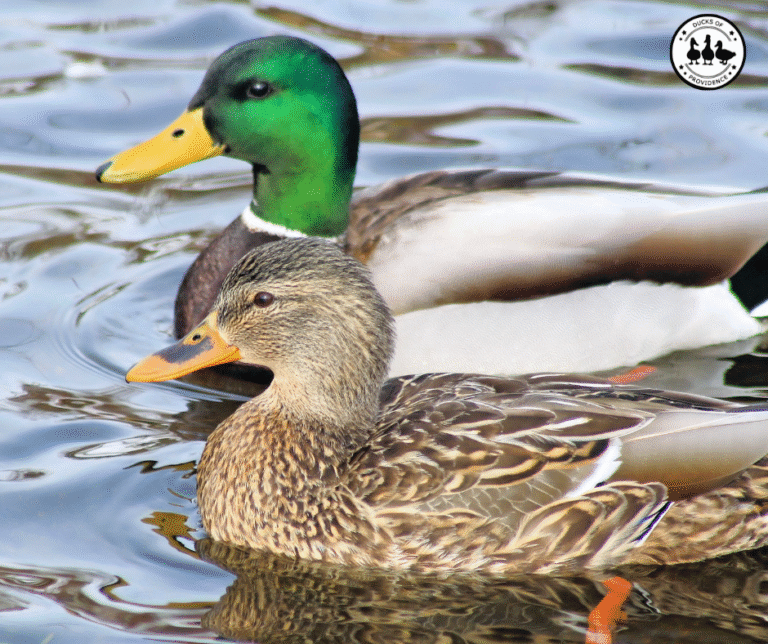

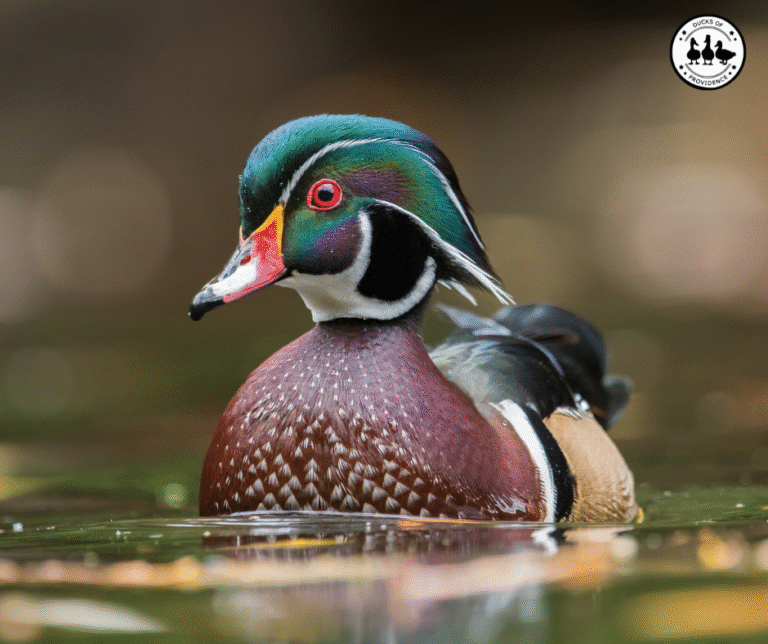
Today as we held each girl .we saw one in partial molt . She has been cuddled and kept in our laps today . She was very shy at first but after her love session ended and she went back with her male and 2 sisters she went to the pool and was acting more calm and like herself .
Some ducks are especially sensitive when they are molting. These new feathers can be irritating when growing. Our ducks don’t like to be handled or cuddled while they are molting, but they are fine afterwards. And our Simon will always take a bath after I cuddled him. He needs to wash that human off of him 😁
I found this very helpful, I felt my ducks behaviour was different and feel totally reassured by reading this information
Thank you, I found this so helpful. I have a sweet girl who unfortunately did not win the genetic lottery and has had some issues, including an ovum prolapse her first year, leading to no more eggs (a good thing for her, actually). This past month we took care of her foot injury (long story), and now she’s molting her wing feathers and looks like death and is very quiet. This helped ease my mind – even though it’s not my first duck with full molt – I was still concerned (and because of bird flu, our vet will only offer phone advice). We are adding brewer’s yeast and electrolytes to her daily routine. ❤️
I am glad you found this helpful. I am sorry about what your sweet duck is going through. Thanks for giving her all the love she deserves ❤️